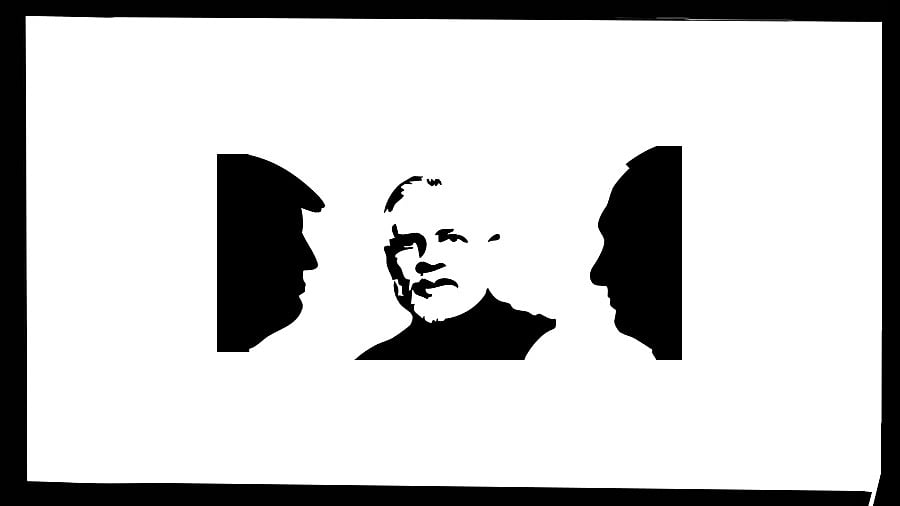
During recent weeks, the debate around strengthening sanctions has gathered momentum in the United States and Europe against the backdrop of Russia’s continuing aggression against Ukraine. In the middle of July, the European Union enacted the 18th round of sanctions, which, among other measures, imposed sanctions on major Indian oil importers. More importantly, the recent 25% tariff levied by Donald Trump on India and the additional 25% tariff over the import of crude oil from Russia reflect a shift in the US president’s approach to dealing with Russia.
These developments will have implications on the stability of the global energy markets. In light of the threat of further sanctions, New Delhi has continued to defend its purchases by rejecting unilateral sanctions and reaffirming the centrality of the UN as the sole authority in imposing sanctions. A sanctions-happy US imposing secondary tariffs on India, on an issue that it considers its core national interest, will have structural implications on the nature of the US-India relations, and has already resulted in a shift in New Delhi’s tone on the sanctions.
How states react to the threat of sanctions is dependent on several structural realities. For instance, in the aftermath of the US withdrawal from the Joint Comprehensive Plan of Action in 2018, New Delhi drastically reduced the consumption of Iranian oil, even though the EU did not impose sanctions. The costs outweighed the benefits of creating alternative channels for buying oil from a country sanctioned by Washington. Interestingly, since the invasion of Ukraine, New Delhi’s oil imports from Russia began to increase, even with financial sanctions imposed against Russia and the introduction of a $60 price cap.
Indian refiners continued to purchase oil from Russia – the driving factors were 1) the price: the discounts per barrel in 2022 and 2023 were as high as $18-$20 2) the creation of mechanisms for the settlement of trade in non-Western currencies and the provision for Russian entities to open Rupee Vostro accounts in India and c) the expansion of the energy sector landscape – recent years have seen India’s oil storage and refining capabilities improve significantly. However, the biggest structural factor that supported India’s decision to purchase increasing volumes of Russian oil was an overarching understanding to ensure the stability of the global energy market, especially at a time when the global economy was recovering from the shocks induced during the pandemic. The import of discounted crude has had positive multiplier effects on the Indian economy.
These structural realities began to shift and the discounts on the oil prices began to drop to as low as $2.5 to
$4 per barrel. Additionally, the discourse around the recent sanctions comes amid concerns on Ukraine where Russian aggression has refused to slow down. Even with Trump initially adopting a conciliatory position vis-à-vis Russia, by conditionally factoring in some of Russia’s demands, the negotiations between Russia and Ukraine have not yielded any tangible results. This deadlock has resulted in pressure mounting on the Trump administration, forcing it to issue an ultimatum to Russia – reach an agreement with Ukraine or be ready to face punitive sanctions.
Finding new markets
However, Russian oil accounts for 10% of the global oil imports. Sudden disruptions in the supply can see oil prices soar as high as $120, which countries including the United States do not want. It would also contradict Trump’s objective of maintaining low energy costs and keeping inflation in check. This explains the contention that despite the recent tariffs that will have a debilitating political and economic impact, there is a likelihood of both countries reaching an agreement.
If enforced, the secondary sanctions will have a short-term impact on India. With the oil discounts falling, the creation of mechanisms or vehicles to facilitate trade at the cost of additional secondary sanctions will not benefit India’s interests. New Delhi has begun looking for new markets such as Azerbaijan, Nigeria, Guyana, and Brazil to offset its dependence on Russian oil. Even with several refiners diversifying their options, it is too early to draw a conclusion that a switch from Russian oil is in the works.
The political establishment in New Delhi has not been particularly perturbed by the secondary sanctions discourse. Conversely, on multiple occasions, the leaders have stressed that the threats of secondary sanctions and tariffs impinge on the country’s sovereignty in making decisions that reinforce its energy security. They have also called out the Western double standards. The rising protectionist discourse in the US, amplified by the secondary tariffs, may result in a growing impetus in New Delhi to strengthen its commitment to regional and plurilateral mechanisms such as BRICS and SCO. It may even decelerate the pace of strategic cooperation between the two countries.
That said, there is a contention that both countries will likely be able
to reach a deal. A Trump-Putin meeting is coming up and if the two
countries were to finalise a roadmap on ending the hostilities in Ukraine,
the additional tariffs could even become redundant.
(The writer is a junior fellow with the Observer Research Foundation)